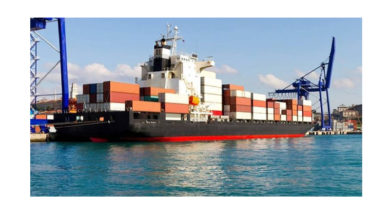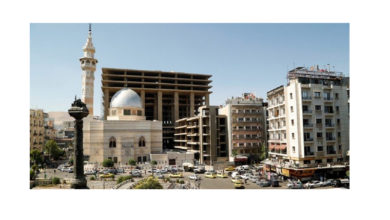Local Solutions For Global Markets
With 16000 print houses across the country, South Korea has a vibrant printing industry. Korea International Printing and Graphic Industry (KIPES) every year puts on display a glimpse of this huge industry. However, global recession has left its mark on this thriving market as well. It was against such a back drop that the 19th edition of KIPES 2012 was held in halls 1& 2 of the Korea International Exhibition Centre. The organizers of the show, Korea E&Ex inc. as well as Korean Printers Association have decided that the yearly exhibit is not appropriate, considering the state of the industry, therefore the next edition of the exhibition will take place in 2014 and KIPES will henceforth become a biannual event.
 Meanwhile during the 19th edition of Kipes, 225 companies from 22 countries including US, Japan, China and Germany exhibited in more than 15000 square meters of exhibition space, attracting 26,613 visitors from across the world including the Asia Pacific region. This exhibition is supported by the Ministry of Culture, Sports and Tourism, Ministry of Knowledge, Ministry of Economy, Seoul Printing Information Industry Cooperative, KFDA (Korean Federation of Design Associations), Korea Printing Research Institute, Korea Binding Industry Cooperative, SPAK (Screen Printing Association of Korea) and other related institutes and groups.
Meanwhile during the 19th edition of Kipes, 225 companies from 22 countries including US, Japan, China and Germany exhibited in more than 15000 square meters of exhibition space, attracting 26,613 visitors from across the world including the Asia Pacific region. This exhibition is supported by the Ministry of Culture, Sports and Tourism, Ministry of Knowledge, Ministry of Economy, Seoul Printing Information Industry Cooperative, KFDA (Korean Federation of Design Associations), Korea Printing Research Institute, Korea Binding Industry Cooperative, SPAK (Screen Printing Association of Korea) and other related institutes and groups.
During the welcome ceremony, Namsoo Kim, Chairman of Korean Printing Association said, “KIPES 2012 is the place where the latest trends in the printing industry, with a special emphasis on digital printing, are exhibited. I am confident that all those who visit the exhibition will view it as a not to be missed event and as an opportunity to learn more about the graphic arts industry.”
He added, “The Print Culture Industry Promotion five-year plan (2012-2016), which was recently announced by Choi Kwang Sik, the Minister for the Ministry of Culture, Sports and Tourism – has raised the hope of the printing industry.” He remarked, “The five year plan program will boost KIPES exhibition, which displays some of the most excellent works in commercial printing and even in niche printing.”
The president of Korea E & Ex, Choongjin Kim remarked, “I thank all exhibitors, print-related organizations and officials for your cooperation and support that allowed KIPES to truly establish itself as a specialized local printing industry exhibition.” He also said, “We are confident that KIPES will raise the level of print technology and will provide a clear direction for the printing industry and its future development.”
Digital is King
Going digital is a global trend. KIPES 2012 was a manifestation of this dominant trend. A raft of companies (mainly Korean and Chinese) offered a wide range of digital printing equipment from narrow web presses to large format printing. The big names such as Heidelberg, manroland, KBA, HP and Xerox did not participate. However their absence created a breathing space for smaller companies to attract visitors and promote their products. The visitor turnout was very good and healthy. Konica Minolta, Fujifilm and Screen participated through their representatives. Pitney Bowes also showcased some interesting technology including Lobby Guard. Lobby Guard is a stand-alone, self-service kiosk that allows visitors to sign in and out with no staff involvement. Employees can be notified via email or text message upon visitor arrival. The kiosk includes necessary security hardware. Scodix introduced its Sense technology. The company offers digital presses that execute print enhancement. But instead of coating the company uses special polymers to create eye-catching special effects. The height of polymer applied to the surface of substrate can be up to 250 microns, which is 100 times higher than any kind of varnish.
 One of the major attractions at KIPES was the display of clever, small solutions that help printers generate revenue stream without the need of a huge investment. One of these solutions is called Das Etikett. The machine is a powerful garment label maker with industrial quality. You can produce up to 70,000 care or name labels on the surface of quality satin ribbons per day. The price of the whole system including ribbon is 7000 USD. The machine is supplied through CUTEX in Korea. A host of Korean and Chinese cutters including Hyundai and others were also on display. The Swiss CTP manufacturer Lüscher participated in the show through their agent Totalcomtech. An all new XDrum! UV CTP system was on display at the booth. Despite all the advancement in thermal and processless plate technology there is still a huge market for conventional PS plates. That’s why Lüscher with the cooperation of Heidelberg introduced the new XDrum! UV platesetter. The XDrum! UV uses the Lüscher UV laser system for imaging process. WE Digital Printing Solutions from Korea put on display a range of finishing equipment for digital printing as well as mailing equipment and book binding solutions. Dilli, the well known Korean manufacturer of large format printers introduced an all new flatbed 6 colour large format printer from NEOCERES series. The machine also uses white ink. With a maximum print speed of 33 square meters per hour and maximum resolution of 720 x 1440 dpi the printer can offer high quality at high speed. Machine’s maximum print width is 2.5 meter and uses 8 print heads with 1024 nozzles. Dilli also brought a new model of NEOTITAN printer to the show. This combo printer uses 4 colour plus white plus varnish. With the maximum print width of 1.6 meter it is considered as a more affordable option to the NEOCERES.
One of the major attractions at KIPES was the display of clever, small solutions that help printers generate revenue stream without the need of a huge investment. One of these solutions is called Das Etikett. The machine is a powerful garment label maker with industrial quality. You can produce up to 70,000 care or name labels on the surface of quality satin ribbons per day. The price of the whole system including ribbon is 7000 USD. The machine is supplied through CUTEX in Korea. A host of Korean and Chinese cutters including Hyundai and others were also on display. The Swiss CTP manufacturer Lüscher participated in the show through their agent Totalcomtech. An all new XDrum! UV CTP system was on display at the booth. Despite all the advancement in thermal and processless plate technology there is still a huge market for conventional PS plates. That’s why Lüscher with the cooperation of Heidelberg introduced the new XDrum! UV platesetter. The XDrum! UV uses the Lüscher UV laser system for imaging process. WE Digital Printing Solutions from Korea put on display a range of finishing equipment for digital printing as well as mailing equipment and book binding solutions. Dilli, the well known Korean manufacturer of large format printers introduced an all new flatbed 6 colour large format printer from NEOCERES series. The machine also uses white ink. With a maximum print speed of 33 square meters per hour and maximum resolution of 720 x 1440 dpi the printer can offer high quality at high speed. Machine’s maximum print width is 2.5 meter and uses 8 print heads with 1024 nozzles. Dilli also brought a new model of NEOTITAN printer to the show. This combo printer uses 4 colour plus white plus varnish. With the maximum print width of 1.6 meter it is considered as a more affordable option to the NEOCERES.
A Rich Conference Program
One of the most interesting parts of KIPES has always been the seminars that are held parallel to the show. Other than Korean experts, International speakers from all over the world offer presentations on subjects that matter to printers. English translation is available for Korean language seminars. On day second of the show a seminar on how to make success in printing business was organized by the leading Korean journal, Graphic Worlds Monthly and Korea E& Ex Inc. During the first session, Ron Ellis of Ron Ellis Consulting talked about the ‘Future of Print – Characteristics of Successful Printers in a Down Economy.’ He presented a number of case studies of various print houses and depicted how they turned out to be successful by changing their printing techniques and methods as well by diversifying. He explained how economic recession led to the closure of hundreds of plants and the effect it had on supporting industries. He pointed out that offset printers alone are not sufficient to sustain print business. The case studies found out that successful printers made use of digital, inkjet-web, wide-format, and other print processes. It also explored the possibilities of printing in niche markets. While examining the profile of small print houses, Ron suggested that small printers can run successfully by maintaining existing offset presses, and by adding up the digital print capabilities along with some wide format capabilities. The study found out that while some printers are prospering others are declining, and the printers who have prospered have improved their efficiency by adopting new printing methods.
The second session was held by Ryu Myeongsik, CEO of Haingraph Co. He talked about ‘Value based management for customer satisfaction’. Ryu talked about the trends and changes in the market place and how there was a paradigm shift in the marketing principles. He also showcased some of the projects that the company was involved in, like printing a special supplement for the Seoul spring festival program, brochures done for the Pyeongchang Olympic, for the Yeosu Expo 2012 and printed material for the Nuclear Security Summit that was held in Seoul this year. The company has won many accolades under various categories in Asian print awards and the Seoul print awards.
The third person to talk was Pornthep Samatiyadekul, Managing Director of Sirivatana Interprint Public Co. Ltd – a printing house in Thailand. He presented to the audience the ‘New Business Models for Tomorrow’. Explaining his own success story, Pornthep depicted how a printer can be successful in the long run. Sirivatana Interprint today claims to be one of the best printer’s in Asia and offers creative services, pop-up art works, pre-press, press and post-press services among others. The company exports its products to countries like the USA, Australia and UK. To quote the words of Pornthep, “Our philosophy is based on continuous improvement aka Kaizen (Japanese word for improvement/change for the better). We impress our customers with our service and give them value for money spent.” The company has also entered the digital media platform by launching Sirimedia Co. Ltd., which is a new media company that focuses tablet users as well as new technologies that facilitate interaction, connection and communication.
The session concluded with a presentation by Les Bovenlander, Business Development Manager for Asia and Africa – Taopix. He talked on the subject ‘Diversify to Survive and Grow’. Les explained how print has become a commodity, and how printers can make profits by re-inventing and re-engineering constantly. In his presentation, he provided many solutions on how to emerge as a successful printer. For instance, he asked printers to, “Step outside your business, take a pragmatic view of your business through independent eyes. Look at your company from a far, where your business is today in your market. Then look internally, how well are you armed or skilled to meet the changing market trends.”
My Take Away
This was my third visit to KIPES exhibition and as in my past visits I have learned more about the industry and met with lots of interesting people. Every exhibition has its own character and personality. KIPES is the place to find some clever and local solutions for digital as well as commercial and packaging printing. The traces of global printing trends are also visible here. However the local and regional aspects are far stronger than global trends.
Shifting from an annual to a biannual event will also make this interesting trade event richer in content and hopefully more international as well.
Visit to a total printing solution centre

During my short visit to Korea, I had the opportunity to visit Tara TPS Printing facility. The company is one of the biggest publishers in Korea and has a network of quick printing shops across the country, which operates under the name of Tara Graphics. The company also has a distribution (Tara distribution) and a print on demand centre (Tara POD.) the company has two huge printing factories in Seoul as well as an office and a warehouse.
Tara’s wide range of equipment and solutions include Avalon CTP system from Agfa, multiple units of Heidelberg, Komori and manroland sheetfed presses as well as Mitsubishi and Komori web-fed machines. The company is one of the few print houses in Korea, which has implemented G7 standards. During my tour of Tara’s factory- Ron Ellis, a printing technology specialist and a G7 expert, presented the G7 PC certificate to Tara’s representatives. According to Ron Ellis, Tara has demonstrated one of the best and most thorough examples of a G7 PC Master in action.
The Company itself is impressive in the way it is organized and handles work. The G7 PC implementation was done by Hansol Paper. During the presentation, Dr. Jeon of Hansol offered the company’s case study, with charts showing the G7 PC implementation. To implement the G7 standard all presses were calibrated and the company had to make sure all partner companies are committed to use colour control bar.
 The project has been concluded successfully and the company is now a fully G7 complaint print house. Tara exports 15% of its printed products to countries such as the US, Australia and Japan. In both plants, the company consumes 10000 plates per month. In my opinion Tara is a prime example of how you can be successful when you offer quality. And you can achieve that by following the quality control concept.
The project has been concluded successfully and the company is now a fully G7 complaint print house. Tara exports 15% of its printed products to countries such as the US, Australia and Japan. In both plants, the company consumes 10000 plates per month. In my opinion Tara is a prime example of how you can be successful when you offer quality. And you can achieve that by following the quality control concept.
You could find Tara’s range of equipment in many print houses. However the trick is efficient use of workflow as well as implementation of standards and procedures that will help you distinguish yourself from the pack.





